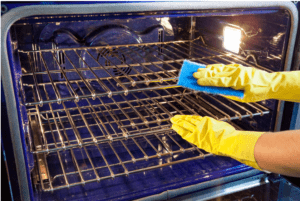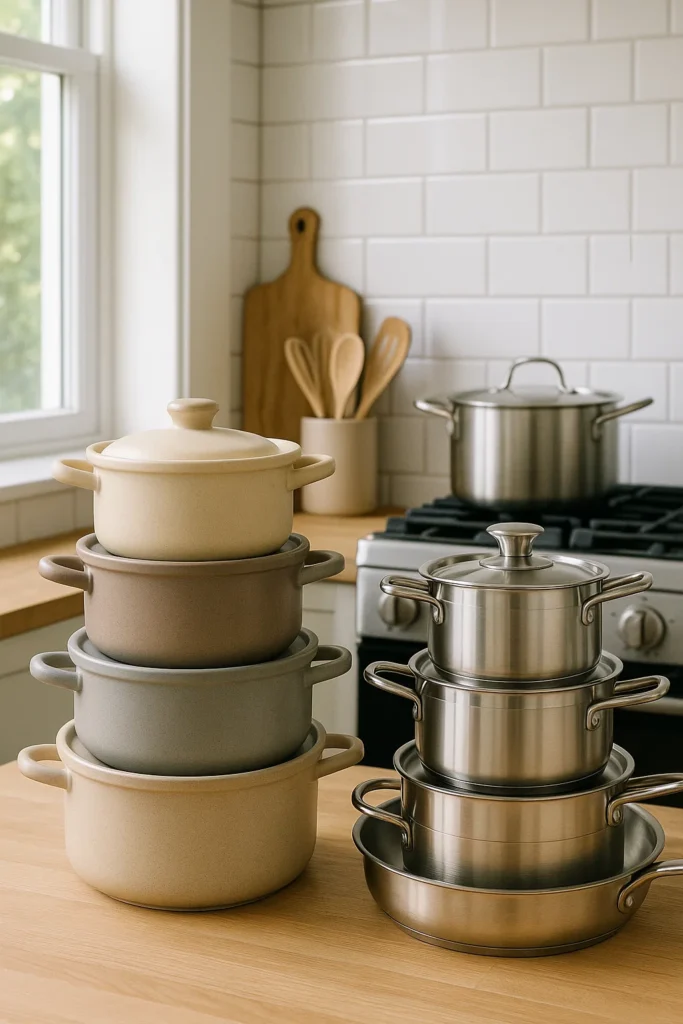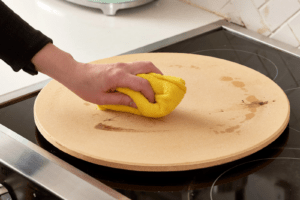
How to Clean Oven Racks with Ease: No Scrubbing
Possibly the most dreaded task when cleaning your kitchen lies in the oven. Cleaning oven racks, or shelves, when baked

You recently decided to upgrade your kitchen and now you want to upgrade your cooking. Choosing the right cookware is crucial for creating delicious meals and maintaining a safe, efficient kitchen. If you’re deciding between ceramic cookware and stainless steel cookware, you’re in the right place. In this guide, we’ll compare ceramic vs stainless steel cookware to help you determine the best option for you cooking needs.

Ceramic cookware has quickly become popular due to its attractive appearance and non-stick surfaces. When discussing ceramic cookware, it’s essential to distinguish between pure ceramic and ceramic-coated cookware.
Ceramic cookware is created using natural clay combined with water, molded into shapes, then heated at extremely high temperatures. This process transforms the clay into a sturdy, durable ceramic material. Ceramic-coated cookware typically involves applying a ceramic-based non-stick coating over a metal pan such as aluminum. Learn more at Caraway.com.

Ceramic cookware, especially ceramic non-stick pans, has several significant advantages:
Despite the benefits, ceramic cookware isn’t without its downsides:
Stainless steel cookware is celebrated for its durability and versatility. It is often the preferred choice of professional chefs and passionate home cooks alike.
Stainless steel cookware is created through a blend of iron, carbon, chromium, and other metals. Chromium and other metals provide corrosion and rust resistant material. High-quality stainless steel cookware often features additional layers of aluminum or copper sandwiched between steel layers to improve heat conductivity. Learn more at sfgate.com.

When considering stainless steel cookware, you will find several compelling benefits:
However versatile and durable stainless steel cookware may be, it also has a few drawbacks:
Performance is often the deciding factor when selecting cookware. Here’s how ceramic and stainless steel cookware stacks up in terms of cooking performance.
When comparing ceramic vs stainless steel:
Your preferred cooking style might dictate your cookware choice:
Safety is paramount when selecting cookware. Both ceramic and stainless steel cookware offer distinct health-related advantages.
Ceramic cookware, particularly pure ceramic pans, is often regarded as one of the safest cooking pans available. It’s free from PTFE and PFOA, toxic chemicals often found in some other non-stick coatings. If safety and chemical-free cooking are your priorities, ceramic cookware can be your best option.
Stainless steel cookware is also considered safe. It doesn’t leach harmful substances into your food when used properly. However, cheaper, lower-quality stainless steel cookware might contain nickel, which can potentially cause allergic reactions in sensitive individuals.
Proper care extends your cookware’s lifespan significantly, and maintenance varies between ceramic and stainless steel. Either way, check out this drying rack for ultimate cookware care.
Price varies significantly depending on quality and brand. Generally:
Ceramic cookware shines when cooking delicate dishes and delicate dishes also require well-made knives. Here are a few popular recipes perfect for ceramic pans:

Fluffy Pancakes
Scrambled Eggs
Vegetable Stir-Fry
Stainless steel cookware is excellent for the recipes that require high heat and precise cooking.

Pan-Seared Steak
Classic Chicken Marsala
Pasta with Garlic and Olive Oil
When searching for the best ceramic pan, look for trusted and popular brands known for durability and effective non-stick properties. Popular choices include Caraway, Le Creuset, and Kyocera. Find more details about these pans at SeriousEats.com.
For the best stainless steel cookware, brands like All-Clad, Calphalon, and Hestan are popular and reputable. Food and Wine discusses a wide option of stainless steel cookware. These brands typically incorporate aluminum and copper cores for optimal heat distribution and performance.
Ultimately, choosing between ceramic vs stainless steel cookware depends on your cooking habits, budget, and safety preferences:

As you upgrade your kitchen, find amazing items at MyWorthyHome.com. Selecting the right cookware can significantly enhance your cooking experience and the quality of your dishes. Think of cookware as an investment. Understand your needs and cooking styles and you will get the most out of your cookware for years to come.
Get our most valuable tips right inside your inbox, once per month!

Possibly the most dreaded task when cleaning your kitchen lies in the oven. Cleaning oven racks, or shelves, when baked
One-pot meals are becoming everyone’s favorite cooking hack. Whether you’re a busy mom or a business professional needing to make

Baby Bunnies – Uniquely made creatures. Do you know that baby bunnies are born deaf, blind, and without fur? Shocking,

Okay, let’s be honest, my pizza stone has seen some things. Things like a calzone disaster that left a cheesy

There are many benefits of owning down comforters. Besides the obvious enjoyment of sleeping under a lightweight, soft, and warm

If you’re here, you’ve likely got your hands on some good cuts of venison – but are stumped on how
My Worthy Home © All rights reserved.